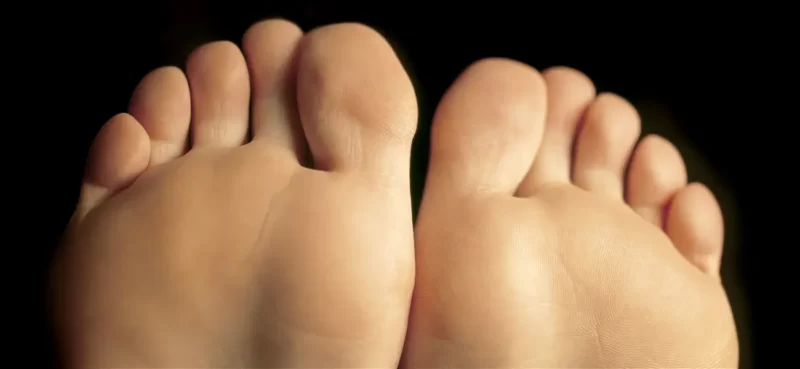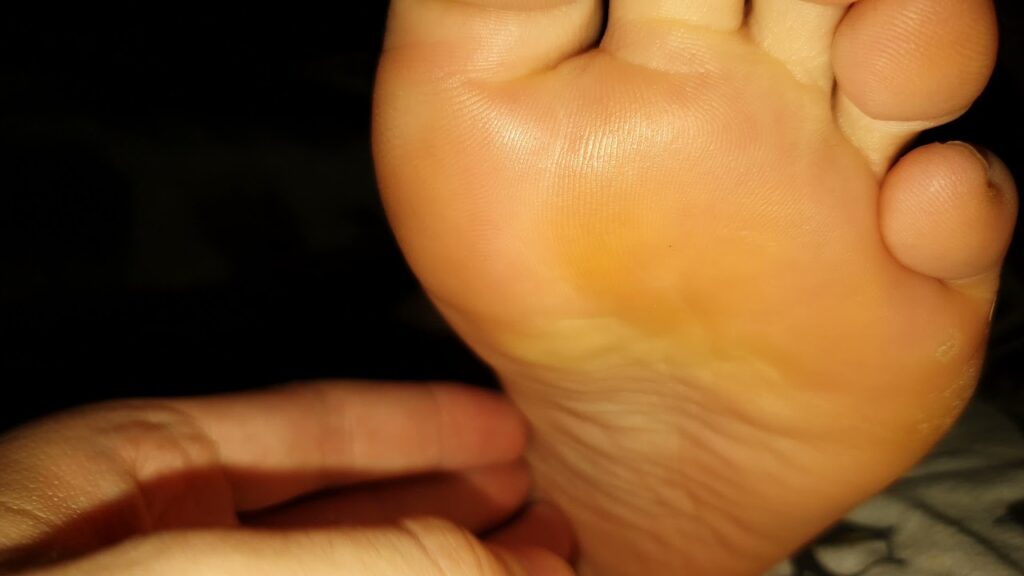Why Are My Feet Yellow?

Yellow skin on your feet is usually nothing to worry about. Feet are subjected to a lot of pressure and friction, which can lead to thickening and discoloration of the skin. In rare cases, yellow feet can be a sign of an underlying disease. In this article, we’ll cover some of the most common causes of yellow feet, along with treatment options and prevention techniques.
Table of Contents
What Causes Yellow Feet
Jaundice
Sometimes, yellow feet can be a symptom of jaundice. Yellowing around the skin and the whites of the eyes are the main symptoms of jaundice.
Bilirubin toxicity occurs when the body builds up too much bilirubin through the breakdown of red blood cells.
Jaundice can turn your feet yellow, but it can also cause yellowing of the skin elsewhere on your body. In this condition, itching is common and sometimes severe.
Jaundice is a symptom of:
- Hepatitis A, B or C, and other viral infections
- gallbladder problems
- Worst-case liver failure
You should address the underlying cause of jaundice to treat it. People with jaundice should see a doctor immediately for examination and treatment.
Calluses
A callus is a thick, hard area that develops on the surface of the skin, resulting in yellow, flaky, or waxy tissue. Due to the pressure of these flaky particles, calluses can form on the skin.
Calluses form on your feet when you wear ill-fitting shoes or stand and walk for long periods of time.
Calluses are not a cause for concern, and they usually do not require medical treatment.
anemia
The symptoms of iron deficiency anemia are pale or yellow skin. Therefore, people need iron supplements to increase blood levels of this mineral. People with anemia may also need other dietary modifications.
If blood loss causes iron deficiency, you may need other treatments. Oral contraceptives or medical procedures can often help women with heavy periods and cramps.

Raynaud’s Disease
In Raynaud’s disease, a bright white, possibly yellow, appears on the skin. Over time, the skin turns blue and then red, an exaggerated version of the body’s normal response to cold.
The severity of disease symptoms and the presence of other medical conditions determine the course of treatment. You can manage mild symptoms by wearing thick gloves and socks to reduce stress.
Too Much Turmeric
Turmeric is a mild spice that is used in the home as medicine due to its antioxidant and anti-inflammatory properties. Curcumin, the most active compound in turmeric, is a bright yellow pigment.
The study’s authors also noted that applying turmeric to the skin can also cause the skin to discolor and turn yellow.
Carotenemia
Carotenemia is caused by the presence of high concentrations of carotenoids in the blood. This is a pigment you can find in fruits and vegetables.
When a person eats large amounts of carotenoid-rich fruits and vegetables, carotenoids are excreted in urine, sweat, and feces.
How To Diagnose If You Have Yellow Feet
f you only notice yellow discolorations on your feet, consider seeing a podiatrist, a doctor who specializes in foot conditions. They can easily identify calluses or any other conditions that can cause discoloration.
You can use the Healthline FindCare tool to connect to doctors in your area.
If you notice yellowing of the skin outside of your feet, make an appointment with your doctor as soon as possible. They might start by running a series of tests, including:
- complete blood count
- liver function test
- blood sugar test
- beta-carotene level test
- Bilirubin blood test
- cholesterol test
Based on the results of these tests, they may also use a CT scan or MRI to help them determine the diagnosis.
How Can You Prevent Yellow Feet?
- You should practice good foot hygiene by washing your feet with soap every night and moisturizing them before bed.
- Toenails should be clean, dry, and short. Bend the edges as little as possible with the help of a nail file for a clean look.
- Always try to wear shoes that fit your feet. You should avoid tight shoes, socks, and high heels.
- Avoid going out barefoot as this can introduce bacteria into your feet and make them dirty.
- Always eat a balanced diet rich in iron, calcium, and vitamin B12.
- Limit your intake of beta-carotene-rich fruits and vegetables.
- Eat foods high in fiber and low in cholesterol regularly.
- Check your feet daily for injuries and skin changes. Cuts, burns, redness, swelling, corns, or calluses such as discoloration, cracks, dryness, and brittleness.
- If you have diabetes, you should check your blood sugar levels every day.
- If you have any related systemic conditions, see your doctor regularly to avoid complications.
Should You Worried?
Occasionally, yellowing of the skin can indicate a medical emergency or serious condition. Contact your doctor right away if you have yellow skin and any of the following:
- bloody or black stools
- fever
- Cognitive problems, such as confusion or drowsiness
- severe abdominal pain or tenderness
- bloody vomit
- bruises or bleeds easily
Final Thoughts
Yellow feet can look scary but are usually caused by a buildup of skin on the soles of the feet. It may also be a body response to a colorful fruit and vegetable diet. However, it can occasionally signal underlying symptoms that need treatment, so it’s best to talk to your doctor if you notice any other symptoms.
Tags: Yellow Feet